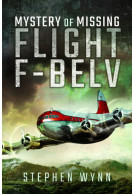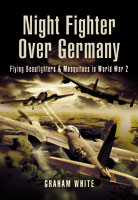Google Books previews are unavailable because you have chosen to turn off third party cookies for enhanced content. Visit our cookies page to review your cookie settings.
Jets at Sea (Hardback)
Naval Aviation it Transition 1945-55
Imprint: Pen & Sword Aviation
Pages: 224
ISBN: 9781844157426
Published: 18th September 2008
Last Released: 13th October 2008
Pages: 224
ISBN: 9781844157426
Published: 18th September 2008
Last Released: 13th October 2008
You'll be £13.99 closer to your next £10.00 credit when you purchase Jets at Sea. What's this?
+£4.99 UK Delivery or free UK delivery if order is over £40
(click here for international delivery rates)
Need a currency converter? Check XE.com for live rates
(click here for international delivery rates)
Need a currency converter? Check XE.com for live rates
| Other formats available - Buy the Hardback and get the eBook for free! | Price |
|---|---|
| Jets at Sea ePub (3.1 MB) Add to Basket | £6.99 |
As World War Two drew to a close, jet-powered aircraft were beginning to be introduced into service. To take advantage of this major development it was necessary for all the world's air powers to rethink combat tactics and develop the means of handling these faster and generally larger aircraft in the air, on land and especially at sea. As this modern breed approached and finally broke the sound barrier, so did landing and take-off speeds. The decade after the war saw rapid developments in the design of both naval aircraft and their seaborne bases - the aircraft carrier. The first jet to land aboard a carrier was a modified de Havilland Vampire in 1945 on HMS Ocean. Progress was rapid and the application of British inventions such as the angled flight-deck, steam catapult and mirror landing sight soon became adopted by the major navies of the world. Naval aircraft too became more sophisticated by the addition of high-lift flap systems and strengthened undercarriages to allow them to operate more safely at sea. The author describes the development of these improvements and then their operational advantages in the Korean War and Suez. He goes on to describe the US development of a potential nuclear carrier-borne bomber, the French Navy and its withdrawal from Vietnam in 1954 and then the use of naval aircraft for anti-submarine work.
The decade after the war saw rapid developments in the design of both naval aircraft and aircraft carriers. This book looks at the many design breakthroughs that were made internationally.
NavyBooks.com
Customers who bought this title also bought...
Other titles in Pen & Sword Aviation...
















